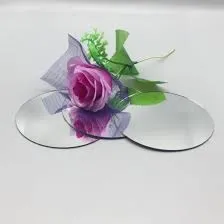

The Role of Mirror Glass Adhesive in Home Decor
Mirror glass adhesive is an essential product for those looking to enhance their home decor with stylish and functional mirror installations. These adhesives are specially formulated to securely bond mirrors to various surfaces, ensuring both durability and aesthetic appeal. Understanding the types of adhesives available, their applications, and installation tips can empower DIY enthusiasts and professionals alike to achieve stunning results.
Types of Mirror Glass Adhesives
There are several types of adhesives designed specifically for mirror applications, each with unique properties suited for different environments. The most common types include
1. Silicone Adhesives These are widely favored due to their flexibility and strength. Silicone adhesives can accommodate the thermal expansion and contraction of both the mirror and the wall materials, reducing the risk of cracking. They are also moisture-resistant, making them ideal for bathroom mirrors.
2. Epoxy Adhesives Known for their superior strength, epoxy adhesives provide a long-lasting bond. They are best used in situations where heavy or large mirrors need to be installed, although they often require precise mixing and application.
3. Double-Sided Tape For lighter mirrors, high-strength double-sided tape can be a quick and clean solution. It’s easy to apply but may not be suitable for larger or heavier pieces, as it can lose adhesion over time.
4. Contact Adhesives These adhesives create an instant bond and are suitable for various surfaces. However, they require careful application, as the bond forms quickly once the surfaces are pressed together.
Applications of Mirror Glass Adhesive
Mirror glass adhesives are used in a variety of settings, from residential homes to commercial spaces. In homes, they are commonly used to secure bathroom mirrors, decorative wall mirrors, and mirrored furniture. In commercial spaces, mirrors are often used as design elements in salons, gyms, and retail displays to create an illusion of larger spaces and enhance lighting.

Properly applied mirror glass adhesive ensures that mirrors remain securely in place, minimizing the risk of accidents caused by falling mirrors, which can lead to injuries or damages.
Installation Tips
For successful mirror installation using adhesive, here are some key tips to consider
1. Surface Preparation Ensure the surface is clean, dry, and free from dust or grease. Any contaminants can weaken the bond.
2. Application Follow the manufacturer’s instructions for applying the adhesive. For silicone, apply a continuous bead along the edges of the mirror, while for double-sided tape, ensure it's firmly pressed into place.
3. Support the Mirror After applying the adhesive, support the mirror until the adhesive sets. For heavier mirrors, consider using temporary supports or brackets.
4. Curing Time Allow sufficient curing time as specified by the adhesive manufacturer before removing any supports or applying pressure to the mirror.
Conclusion
Mirror glass adhesive plays a crucial role in modern interior design, offering functionality and style. The right adhesive can ensure that your mirror installation lasts for years to come while maintaining its beauty. Whether you’re a DIY enthusiast looking to spruce up your space or a professional contractor, understanding the various types of mirror adhesives and their applications can lead to successful and appealing mirror installations. With careful preparation and execution, your mirrors will not only enhance the ambiance of your rooms but also serve practical purposes in your everyday life.